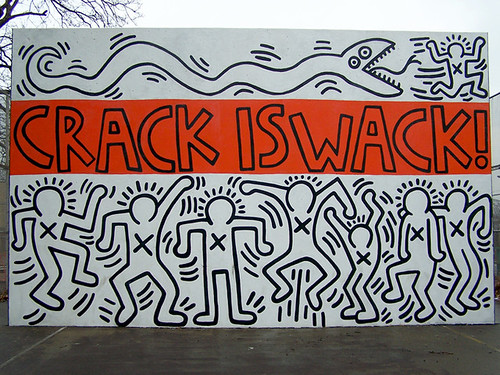I don't know much about sculpture and I've never heard of any of the mentioned artists, so I'm just going to look through the journal casually. While flipping through, I noticed a photograph of a piece of art that looks familiar, but it turns out this is not the piece I was thinking of. What I'm looking at is Damian Ortega's Piel/Skin, and what I'm thinking of is Eva Hesse's Rope Piece, which we examined during our study of post-minimalism.


Damian Ortega's Piel/Skin (2006-07) and Eva Hesse's Rope Piece (1970)
Now that I'm looking at the two works, side by side, I don't see as many similarities as I thought would be present, but I'm still proud of myself for seeing one work of art and instantly thinking of another. Perhaps there is a relationship between the two, or maybe I'm just reading into Ortega's sculpture. Not much information about Ortega or his work is provided, but it does say that Ortega was trained as a political cartoonist and therefore "uses ironic humor to undermine preconceived ideas about art while addressing questions of social organization, environmentalism, post-industrialization, and urban development." I think I would have to go to his exhibit in Boston to gain a fuller understanding of his work, but at least one commonality I see between Ortega and Hesse, albeit very simple, is the use of common-place objects in creating art. The brief blurb about Ortega's exhibit (at the Institute of Contemporary Art in Boston through January 18, 2010) also states that "...these reshaped and rethought everyday objects [Ortega's sculptures] dissolve into dynamic new configurations that underscore the perpetual uncertainty and flux of life." So I'm not seeing a direct connection between Ortega and Hesse, but I do see similarities. Beyond their common use of everyday objects, the concept of the uncertainty and flux of life is definitely something that may have influenced Hesse's work considering her life events: fleeing Nazi Germany as a child, her parents' divorce, her mother's suicide, her failed marriage, the death of her father, and her brain tumor, and overall, the fight for recognition in the male-dominated art world. So it is possible that a relationship exists between Ortega's Piel/Skin and Hesse's Rope Piece despite the gap of almost 40 years between the two works.
Two pages later, I see a photograph, and this time I correctly recognize the artist! The photograph is of Keith Haring's Pop Shop, an artist I know because of his affiliation with Best Buddies (one of his works serves as the official logo for Best Buddies International).




Keith Haring's Pop Shop (1986) and Best Buddies (1990)
I wish the exhibit description that goes with this photograph would talk more about Keith Haring and his work, but he is hardly mentioned, probably because the exhibit (at Tate Modern in London through January 17, 2010) is entitled "Pop Life: Art in a Material World" and focuses not just on the art of Keith Haring, but on the work of several artists, such as Jeff Koons, Takashi Murakami, Damien Hirst, Tracey Emin, and Martin Kippenberger. The mission of this exhibit is "to radically rethink Pop at its legacy by focusing on how, since the 1980s, artists have engaged with the mass media and cultivated signature personas." Though I am not familiar with the other artists mentioned, I am somewhat familiar with Haring's work and therefore, I can see how he engaged with the media and developed his own persona during the 1980s. After all, it was during the 80s that Haring opened the Pop Shop to sell products with his images on them, and it was also during the 80s that Haring created works with social messages. Haring's signature persona seems to be the faceless people featured in his works and his engagement with the media focused on raising awareness about various social problems. This definitely sounds like an exhibit I would go to if I were in London.


Somehow I've spent almost two hours writing this entry and I haven't even made it to the features of the issue yet. I'm going to go ahead and end this entry here and come back tomorrow to look through the rest of the December 2009 issue of Sculpture.


Somehow I've spent almost two hours writing this entry and I haven't even made it to the features of the issue yet. I'm going to go ahead and end this entry here and come back tomorrow to look through the rest of the December 2009 issue of Sculpture.

No comments:
Post a Comment